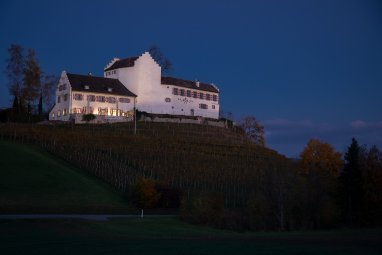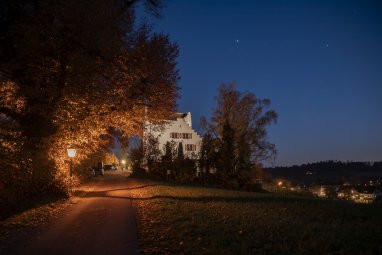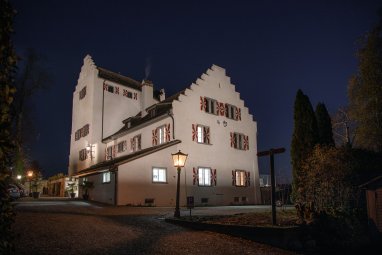Schloss Schwandegg

Identifikation für die Region
Das Schloss Schwandegg ist ein Wahrzeichen der Region und prägt den Hügel bei Waltalingen. Es ist aus allen Richtungen sichtbar und stiftet die Identität der Region.
Das Schloss wird seiner Charakteristik gerecht und harmonisch beleuchtet. Durch die Abstufungen in der Helligkeit werden die Gebäudeteile einzeln lesbar und es entsteht eine plastische Wahrnehmung des Schlosses.
Mit der Projektionstechnologie wird das Licht ist ausschliesslich auf das Gebäude beschränkt. Die Beleuchtung für das Schloss kommt mit minimalem Energieaufwand und geringster Helligkeit aus. Die zweite Nachthälfte wird dabei gänzlich der Dunkelheit der Natur überlassen. Wenn Beleuchtungen reduziert und auf die Abendstunden beschränkt werden, profitiert nicht nur die Natur. Ausreichend Dunkelheit bildet für die Regeneration in der Nacht eine wichtige Basis, welche der Gesundheit des Menschen förderlich ist.
Die neue Beleuchtung ersetzt leistungsstarke Scheinwerfer, welche durch die unpräzise Abstrahlung eine enorme Lichtverschmutzung darstellten.

Soweit man ausklammert, dass kein Licht wohl noch besser wäre, darf ich Ihnen gerne mitteilen, dass ich die Beleuchtung für vollumfänglich gelungen und toll finde. Die dezente Art hat etwas sehr Kunstvolles und gibt dem Schloss einen speziellen, noblen Touch.


Fertigstellung . Completion
2021
Bauherrschaft . Client
Baudirektion Kanton Zürich
Partner
bergamini partner architekten
Fotografie . Photography
Inga Marty
Identification for the region
Schwandegg Castle is the region's landmark and dominates the hill near Waltalingen. It is visible from all directions and provides the identity of the region.
The castle is illuminated in its characteristic and harmonious way. Due to the gradations in brightness, the parts of the building become individually legible and a plastic perception of the castle is created.
With the projection technology, the light is limited exclusively to the building. The lighting for the castle requires a minimum of energy and brightness. The second half of the night is left entirely to the darkness of nature. When lighting is reduced and limited to the evening hours, it is not only nature that benefits. Sufficient darkness forms an important basis for regeneration at night, which is beneficial to human health.
The new lighting replaces powerful floodlights, which were an enormous light pollution due to the imprecise radiation.
